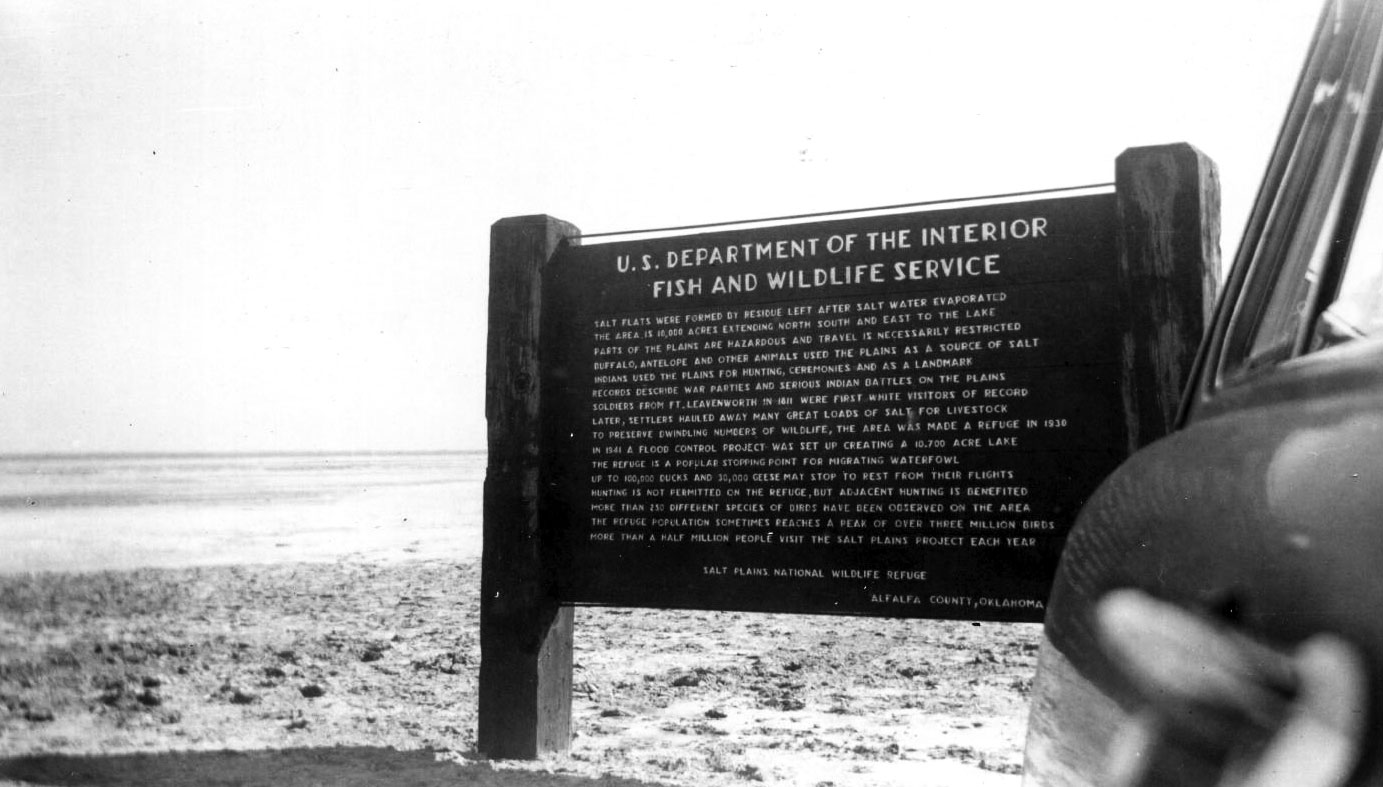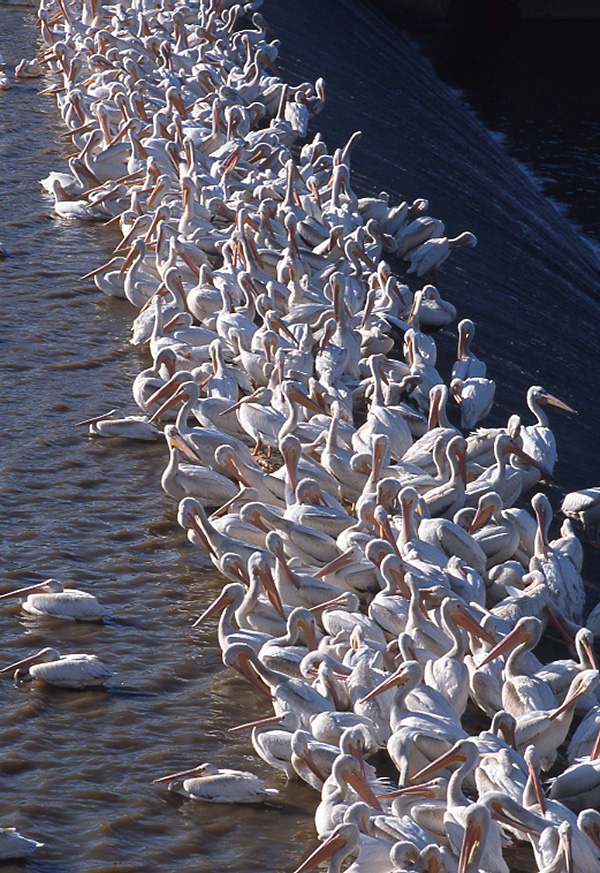
The Encyclopedia of Oklahoma History and Culture
GREAT SALT PLAINS STATE PARK and NATIONAL WILDLIFE REFUGE.
Great Salt Plains State Park encompasses a unique geologic depository of red, hour-glass-shaped selenite crystals in the flood plain of the Salt Fork of the Arkansas River. The park consists of 820 acres of land and water located entirely within Alfalfa County. The entrance is five and one-half miles north of Jet, Oklahoma, on State Highway 38.
The importance of salt in food preservation made the salt plains a significant location from pre-Columbian times to 1811. Pres. Herbert Hoover designated the area of the Salt Fork east of Cherokee, Oklahoma, as a national wildlife refuge by Executive Order 5314 on March 26, 1930. The refuge protects more than three hundred different species of birds and thirty species of mammals.
The idea of building a dam for flood control purposes was included in a 1931 study made for the U.S. Army Corps of Engineers. The seventy-fourth Congress authorized construction with the passage of Public Law 738 on June 22, 1936. Preliminary design studies began in January 1937, and excavation for the spillway began in September 1938. The dam, completed in July 1941 at a total cost of $4,626,270, impounds a 31,420 acre-foot lake. With an average depth of four feet and additional capacity during flooding, Great Salt Plains Lake covers ninety-three hundred acres with forty-one miles of shoreline. It is relatively shallow, only averaging about four feet deep, and it is one-fourth as salty as the ocean.
On August 1, 1958, the State of Oklahoma leased eight hundred acres of the wildlife refuge for use as a state park. Guest cabins and the George Sibley hiking trail were built in 1960. The state's lease will expire in 2008.
See Also
ARKANSAS RIVER, ENVIRONMENT AND CULTURAL ECOLOGY, GREAT SALT PLAINS, HUNTING, SALT AND SALT WORKS







